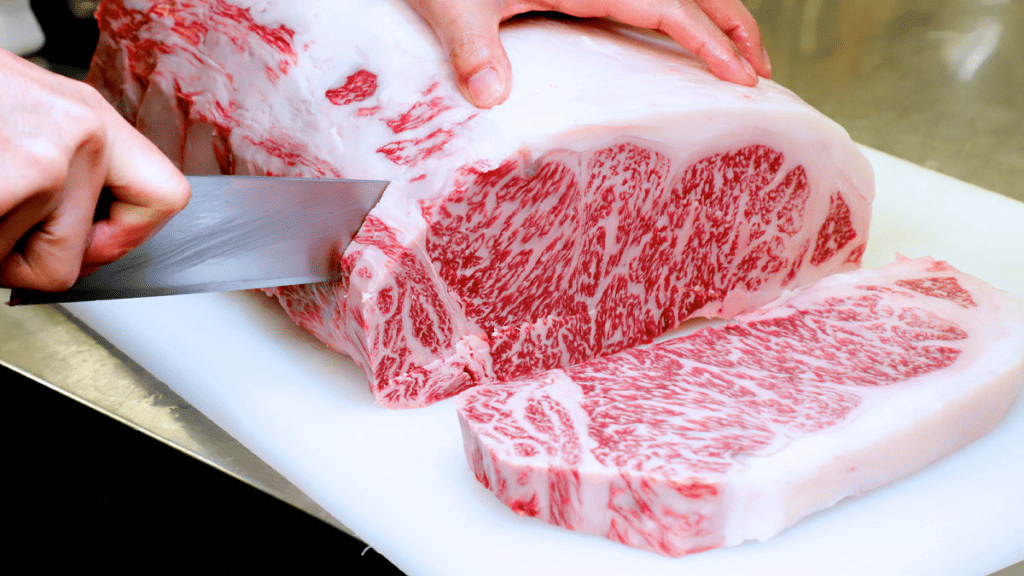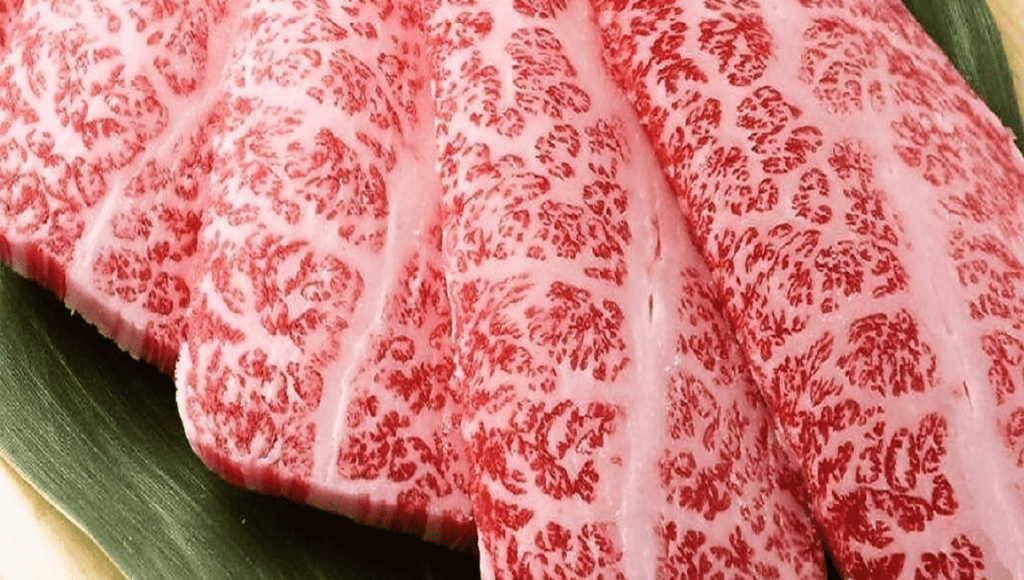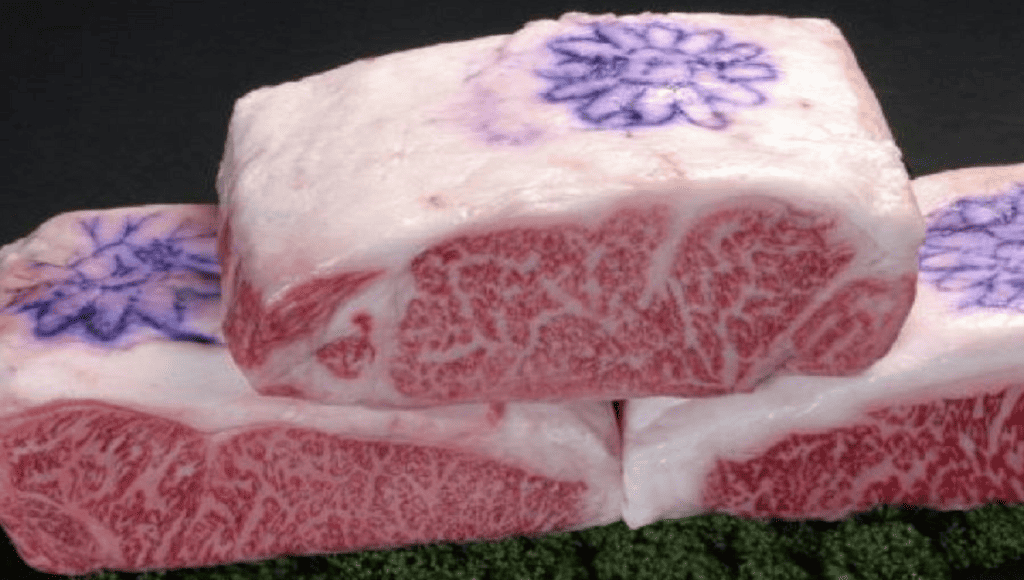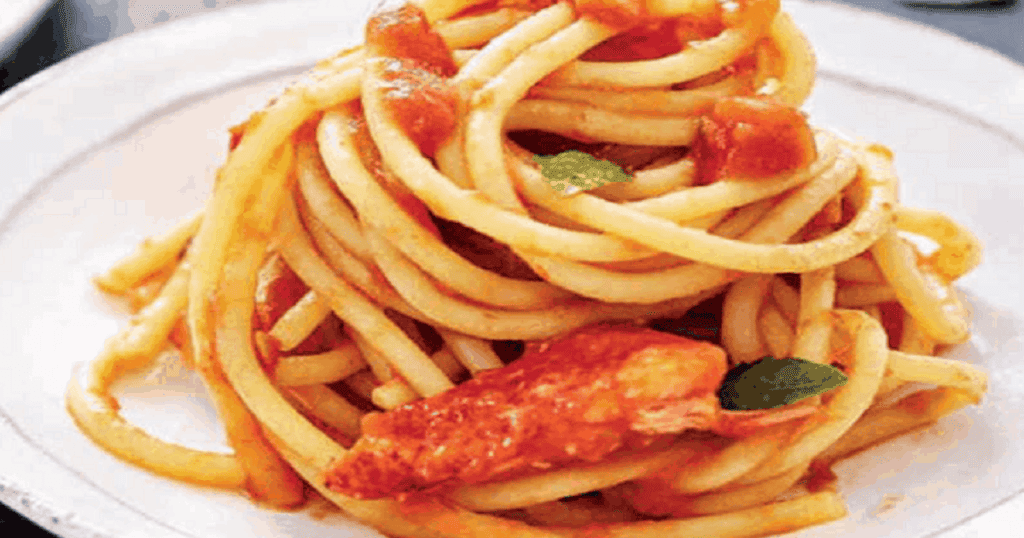Kobe beef, a culinary icon from Japan, is renowned as the most expensive steak in the world. But what makes this beef so special? With its unique production process, strict quality control measures, and exceptional marbling that gives the meat its distinct flavor and tenderness, it’s no wonder Kobe beef has captured not only the palates but also the hearts of gourmets worldwide.
Kobe Beef Explained Quick Takeaways:
- Kobe beef originates from Tajima cows, a Japanese Black breed strain raised specifically in Kobe, Hyogo prefecture.
- The Japan Meat Grading Association sets strict criteria for Kobe beef, including a high Beef Marbling Score (BMS) of six or higher.
- Kobe beef is rarer and more carefully controlled than other Wagyu beef, contributing to its high price.
- The Japanese Chrysanthemum emblem is a proof of designation, ensuring the authenticity of Kobe beef.
Kobe Beef Production Process and Criteria
Imagine a cow born and raised in a specific region, fed specific feed, slaughtered, and processed within that region. That’s the story of the Tajima cows, the source of Kobe beef. Raised in the scenic Hyogo prefecture, specifically Kobe, these cows are the epitome of ‘homegrown.’
Kobebeef.ae explains that Kobe Beef is a premium beef brand produced exclusively from pure-lineage Tajima gyu cattle in Hyogo Prefecture, Japan. According to recent findings, these cattle must be between 28 and 60 months of age, with a carcass weight of less than 470 KG, and meet specific meat quality, yield, and marbling scores.
But it’s not just about geography. The Japan Meat Grading Association has stringent ratings for Kobe beef. The beef must score a high Beef Marbling Score (BMS) of six or higher. This degree of marbling, akin to fine deliciousness veins, sets Kobe beef apart.
Kobe Beef vs. Wagyu Beef

Picture this: You’re at a fancy dinner, and the waiter recommends “Wagyu” and “Kobe” beef. You nod knowingly, but inside, you’re thinking, “What’s the difference?” Here’s your cheat sheet. Wagyu beef is like the umbrella term for Japanese beef, while Kobe is a specific and exclusive type.
According to Snake River Farms, ‘Wagyu’ encompasses several Japanese cattle breeds, including the renowned Kobe beef from Kobe City, Japan. While Kobe beef is famous, other Wagyu varieties like Matsusaka and Ohmi beef from different Japanese regions also offer unique tastes, potentially preferred by some over Kobe.
Think of it as a luxury car brand. Wagyu is like the brand, while Kobe is the top-of-the-range model that only a select few can afford. Unlike Wagyu, which can come from different Japanese cow breeds, Kobe beef comes solely from Japanese Black cows. With its rarity and meticulous production control, it’s no surprise Kobe beef comes with a heftier price tag.
The Impact of Marbling on Kobe Beef

Picture a slab of beef with streaks of fat running through it like a delicate lacework. Marbling is the secret sauce to Kobe beef’s rich flavor and tender texture. When cooked, this marbled intramuscular fat melts, accentuating the beef’s taste and making every bite a culinary delight.
Research (Via Wagyo Man) shows that marbling, the white intramuscular fat found within red meat, significantly contributes to the taste and texture of Wagyu Beef. The fat melts into the meat during cooking, creating a rich, buttery flavor while keeping the meat moist and tender. This result, when cooked properly, is a truly unforgettable culinary experience.
Think of it as natural flavor injections spread throughout the beef. This high degree of marbling contributes to Kobe beef’s high cost. But once you’ve tasted it, you’ll understand why it’s worth every penny.
Strict Standards and Limited Availability of Kobe Beef

Imagine trying to get your hands on a limited-edition luxury item. That’s what it’s like with Kobe beef. Strict criteria and limited supply make it a rare and coveted commodity. Only around 3,000 to 5,000 Tajima cattle make the Kobe beef cut annually.
According to recent findings from The Japan Meat Grading Association reported at Mashed, Kobe beef is under strict regulations to ensure the highest quality. The cows must be of a specific Wagyu breed, raised and processed in the Hyogo prefecture, and be between 28 and 60 months old with a certain meat quality score. The author argues that only around 5,500 cattle meet these stringent standards annually, far less than the global demand.
This exclusivity is part of its charm, much like owning a rare piece of art. The limited availability has also led to the creation of Kobe-style or hybrid beef versions in other countries. But remember, if it doesn’t bear the Japanese Chrysanthemum emblem, it’s not authentic Kobe beef.
Branding and Proof of Kobe Beef Designation

Just like a designer handbag carries a distinct logo, Kobe beef is marked with a Japanese Chrysanthemum emblem. This emblem is more than pretty branding; it’s proof of designation and guarantees authenticity.
According to the information provided by bifteck.co.jp, authentic Kobe Beef is distinguished by a ‘Nojigiku stamp,’ a unique identifier that verifies it has met the stringent quality standards of Hyogo Prefecture. This stamp proves legitimacy, ensuring that only beef that has passed BSE checks and met the grading standards is sold as Kobe Beef.
The beef undergoes rigorous testing for marbling, texture, brightness, and color and must score a minimum of four or five on a scale of one to five. This branding and proof of designation ensure you’re getting the real deal and add to the exclusivity and value of Kobe beef.
Wrapping Up
The story of Kobe beef is one of tradition, meticulous attention to detail, and a relentless pursuit of quality. From the cows’ specific breed and rearing conditions to the strict grading criteria, Kobe beef is a product of dedication and precision. While its price point may be steep, the exceptional taste, quality, and exclusivity make it a worthwhile indulgence for true connoisseurs.
Enjoying a slice of Kobe beef is not just about savoring a meal but also appreciating the rich tradition and craftsmanship behind its production. So, the next time you have Kobe beef on your plate, remember it’s not just food; it’s a culinary masterpiece in its own right and worth it!
Last Updated on October 16, 2023 by John Siracusa



